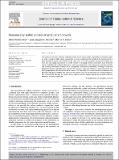Dynamically stable control of articulated crowds
Author(s)
Mukovskiy, Albert; Slotine, Jean-Jacques E.; Giese, Martin A.
DownloadSlotine_Dynamically stable.pdf (843.5Kb)
PUBLISHER_CC
Publisher with Creative Commons License
Creative Commons Attribution
Terms of use
Metadata
Show full item recordAbstract
The synthesis of realistic complex body movements in real-time is a difficult problem in computer graphics and in robotics. High realism requires the accurate modeling of the details of the trajectories for a large number of degrees of freedom. At the same time, real-time animation necessitates flexible systems that can adapt and react in an online fashion to changing external constraints. Such behaviors can be modeled with nonlinear dynamical systems in combination with appropriate learning methods. The resulting mathematical models have manageable mathematical complexity, allowing to study and design the dynamics of multi-agent systems. We introduce Contraction Theory as a tool to treat the stability properties of such highly nonlinear systems. For a number of scenarios we derive conditions that guarantee the global stability and minimal convergence rates for the formation of coordinated behaviors of crowds. In this way we suggest a new approach for the analysis and design of stable collective behaviors in crowd simulation.
Date issued
2012-08Department
Massachusetts Institute of Technology. Department of Mechanical EngineeringJournal
Journal of Computational Science
Publisher
Elsevier
Citation
Mukovskiy, Albert, Jean-Jacques E. Slotine, and Martin A. Giese. “Dynamically Stable Control of Articulated Crowds.” Journal of Computational Science 4, no. 4 (July 2013): 304–310.
Version: Author's final manuscript
ISSN
18777503